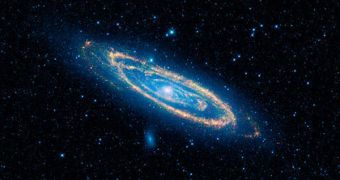The American space agency launched its Wide-field Infrared Survey Explorer (WISE) telescope just a few months ago, but scientists are already talking about getting an extension to the initially-planned mission. NASA officials planned for the instrument to function for about ten months, but experts asked for the flight to be extended for an additional three to four months. Recently, a NASA panel, the 2010 Astrophysics Senior Review Committee, said that it saw no benefit to keeping WISE functional beyond its original life span, and added that the scientific return would not justify the costs, Space reports.
After the first month of commissioning and verification, six months were allotted to a full-sky survey of the Universe. The remaining three months were to be allotted to running an additional survey, this time covering half of the entire night sky. WISE conducts its investigations in four infrared wavelength bands, of which two absolutely require hydrogen coolants in order to function properly. After ten months of operations, the fuel reserve is scheduled to run out, and only two IR detectors will remain operational on the Explorer.
Its science team argued that finishing the second half of the second all-sky survey using only these two IR bands could produce valuable scientific data, but the review panel did no see that. The main reason why the extension was proposed is the fact that the machine and its detectors are currently in excellent condition. Generally, prolonging missions is viewed with reluctance only when spacecrafts are nearing the end of their life span, as this is when risks of failures, glitches and malfunctions increase. The main proponent of the WISE extension was University of California Los Angeles (UCLA) professor and WISE principal investigator Ned Wright.
The existing 10-month flight plan “should produce a catalog and image atlas of great utility to the entire astronomical community. Although it is impressed with the promise of the cryogenic mission, the Senior Review Committee did not find adequate scientific justification in the proposal for the cost of either the Warm Extension or the Enhanced Data Products,” the panel writes in the review. According to sources at NASA, the WISE team needs about $14.5 million to continue operating the telescope, $8 million to create the Extended Source Catalog, and $6.5 million for the “warm” phase of the mission.

 14 DAY TRIAL //
14 DAY TRIAL //